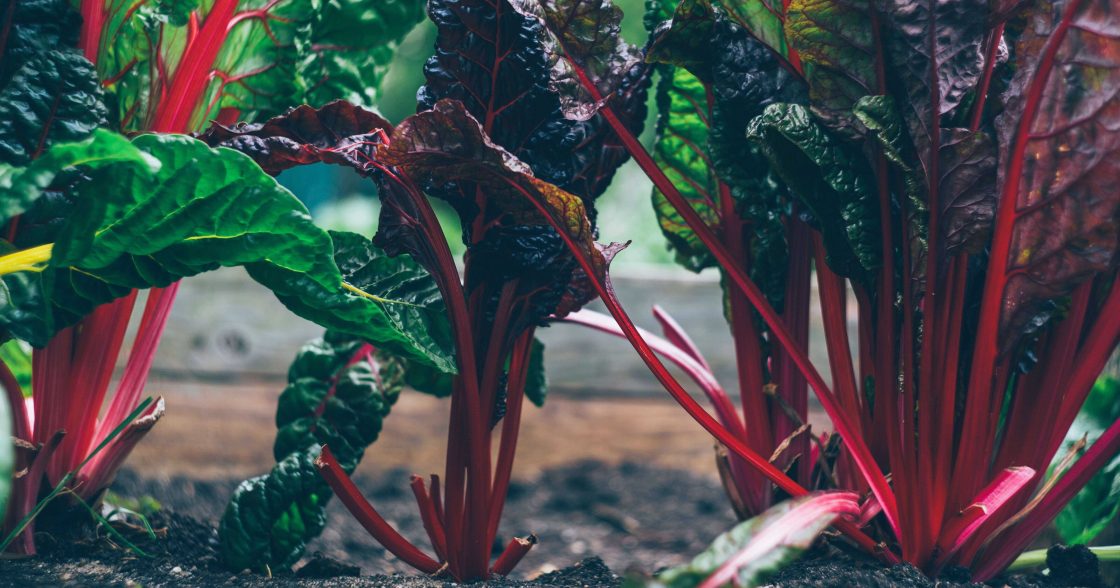5 tips on how to start growing your own fruit and vegetables
21 August 2020This month saw the return of National Allotments Week (10-16 August) and it got us thinking about the benefits which come with growing your own produce. By starting a vegetable patch in the garden of your new build home, not only can you control what fertilisers and pesticides you put on your food, you can also control when exactly you harvest your fruit and vegetables. Produce that you find in your local supermarket has often been picked early in order for it to get to the store, but if you grow your own, you can allow your produce to ripen in the garden so that you benefit from those extra nutrients. Keen to start growing your own fruit and vegetables but don’t have access to an allotment? Don’t worry! You can easily start your sustainable journey in the back garden of your new build house. It’s the perfect blank canvas. Here’s our top five tips on how to start growing your own fruit and vegetables at home:
1. Pick a spot for your patch
Start by looking at your outdoor space and assessing where exactly you will grow your fruit and vegetables. You’ll want to pick a spot which enjoys at least six hours of daylight and consider using a raised bed. This way, you can control the soil and nutrient blend (source: Harvard Health Publishing). If you do have a shady spot, you can use this to plant vegetables that thrive in partial shade such as leafy salads and chives. Not keen on digging up your garden? Why not invest in a greenhouse? Even the smallest of greenhouses can produce good, tender crops including aubergines, cucumbers, peppers, chillies and tomatoes.
2. Plant the produce you eat regularly
If you’re a beginner, start by choosing the fruits and vegetables that you eat regularly and don’t go crazy. Plant a small crop first rather than starting off too big as you don’t want to have too much produce which could potentially be wasted. By planting what you love to eat, you’ll be saving money as you won’t have to be buying it at the supermarket every week. You’ll also appreciate the quality and taste of your own produce as you compare it to your regular supermarket alternatives.
3. Beware of the birds!
We all love birds, but they can be a pain when they’re nibbling on our seedlings or full-fledged leafy salads! Thankfully, there are many ways to keep birds off your vegetable patch which are humane. The most popular methods are placing scarecrows in your garden, hanging CDs from pieces of string so they glisten in the sunlight and brightly coloured balloons which are tied to your fence posts. It may make your garden look slightly bizarre, but your fruit and vegetables will benefit in the long run. Do bear in mind that birds are smart, and they will soon cotton on that a scarecrow which sits in the same place for weeks on end isn’t going to harm them. Make sure you move your bird deterrents around regularly to avoid this. You can also look at laying butterfly netting over your patch which will ensure to keep the birds off your seedlings but the small holes will allow beneficial insects such as honeybees to get through to pollinate (source: Lovely Greens).
4. Soil is fundamental to good vegetable growth
Make sure that your soil is full of nutrients that will help your vegetables thrive. To ensure you have a sizeable crop to harvest, mix compost into your soil. You can either make your own or buy a big bag from your local garden centre. Adding compost will ensure that the soil is well fertilised, allow your crops to flourish.
5. Don’t forget the herbs
Herbs such as coriander, basil and parsley are common to use in cooking, but we often find that the pre-packaged herbs you purchase from the supermarket don’t have a long shelf life and quickly wilt in our fridge. By growing your own, you’ll have an endless supply of fresh herbs that you can cut fresh from your garden. The best way to grow herbs is to hang them high in little pots – fence posts are perfect for this. That way, your herbs will be off the ground away from any wandering cats and contained in small pots so that they don’t spread like wildfire. Herbs can behave similarly to weeds and before you know it, you may have too much which you won’t know what to do with if you plant herbs in the ground.
We hope you have found our top five tips on how to start growing your own fruit and vegetables useful. We’ll leave you with one last resource that we think is an excellent reference for knowing exactly when in the year you should be planting and harvesting different produce. Click here to view this handy cheat sheet from Anglian.
If you have started growing your own fruit or vegetables, we’d love to see your pictures. You can send or tag us in your photos on Instagram, Twitter or Facebook.
